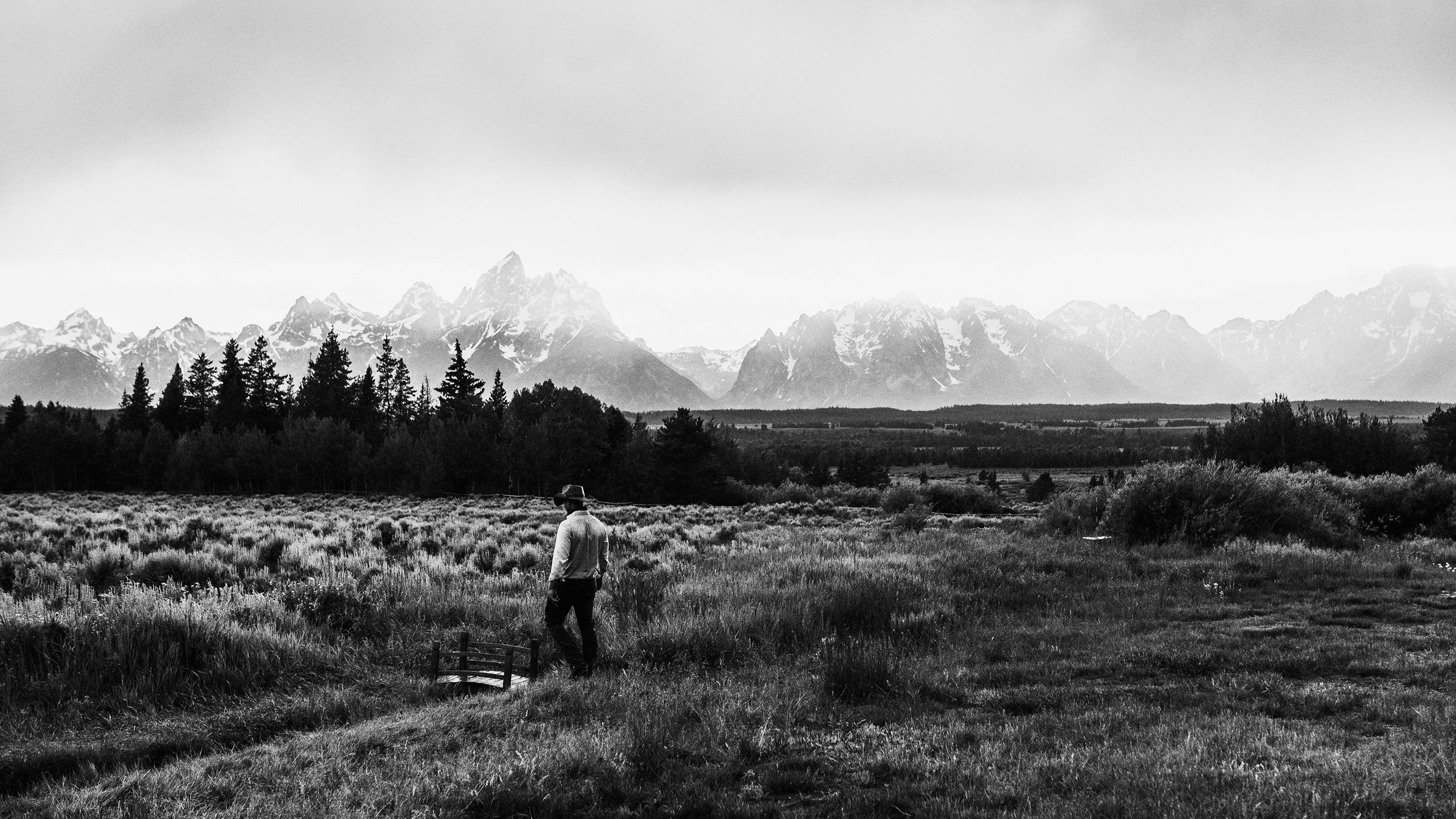
Gushing Geysers, Dramatic Canyons and Militant Feminism
In celebration of Women's History Month, Wyoming presents as so much more than a flyover state
On Election Day 2016, hundreds of women left their "I Voted" stickers piled thick on the grave of Susan B. Anthony in Rochester, New York. Whether or not they cast a ballot for presidential hopeful Hillary Clinton, Anthony’s visitors wanted to pay thanks to the 19th century suffragette who tirelessly agitated for women’s right to vote. Of all the feminist activists you might hear about during Women’s History Month, Anthony is one of the most famous—a fact that’s somewhat ironic given that the first woman to actually hold public office is largely unheard of outside the state of Wyoming.
That woman was Esther Morris, the country’s first female Justice of the Peace. On the hundred and fiftieth anniversary of her historic appointment, she’s primarily known to Wyoming schoolchildren who take a field trip to the the South Pass City Historic Site each year. But in the late 19th century, Morris was so famous that she quickly eclipsed who elevated her to office.
The story of how a six-foot tall orphan with two adult sons and an abusive drunk of a second husband began in the 1860s—when the country was still reeling from the Civil War and the Wild West had blown wide open—in South Pass City, Wyoming. This particular region is high up on the Continental Divide, grey cold, windswept and full of large rocky outcroppings and short, dry grass.A century ago, it was a low saddle between the Wind River Range and the Oregon Buttes. It was an important point on the Oregon Trail where wagons could push up and over the formidable Rocky Mountains, and in the mid-1800s, it also was the site of a significant Wyoming gold rush.
Thousands of former soldiers, newly minted freedmen, and strapping youngsters eager to prove their mettle flocked to desolate places like South Pass City in hopes of making it rich. It wasn’t an easy place to make a life, however. Women were a rarity, and most were devoted, full-time wives—women like Esther Morris.
The hope was that giving women the right to vote in the state would paint the territory as a kind of western feminist utopia.
When she stepped out of the stagecoach at South Pass City’s Idaho Hotel, she would have seen a town of low-slung cabins thickly clutched against the sub-zero Wyoming winters. There were more saloons than churches, and the county jail was a repurposed structure that used to be a family home, partly built over their garbage heap. There is little record of what Morris thought of her new home, though it was certainly a far different landscape from the steamboat port of Peru, Illinois from which she came.
South Pass City hardly seemed like the sort of place that leaned toward progressivism, or catering to radical feminist ideals. But 300 miles south in Cheyenne, Wyoming territory’s Democratic party was trying to solve a tricky problem: After the Civil War, newly enfranchised black voters had firmly sided with the Republican party, the party of Lincoln and abolition. Afraid of being voted out of office by millions of black men in local and state elections, the Democrats began to contemplate another large demographic of potential voters. A young Union veteran and South Pass City saloon owner William Bright floated a suffrage bill as one way he and his fellow countrymen could keep their seats.
It was a cynical ploy, but one that aligned with another problem facing Democrats and Republicans alike in Wyoming: how to get women to move from their comfortable, acculturated towns to a crude and unknown frontier. The hope was that giving women the right to vote in the state would paint the territory as a kind of western feminist utopia. The narrow margin by which Bright’s bill passed, however, belies the truth that Wyoming Democrats were no more woke about women than their contemporaries across the aisle were genuine advocates of civil rights.
When her predecessor wouldn’t turn over his dockets and paperwork, Morris had him arrested.
In fact, the passage of Bright’s bill was so controversial that South Pass City’s sitting justice of the peace resigned in protest. That left District Court Judge John W. Kingman with a judge’s seat to fill, and he decided to test the Democrats’ theory that all of Wyoming needed to grow its female population was a little rebranding. Why not fill the seat with a woman and let the chips fall as they may?
Esther Morris wasn’t easily persuaded, however. Perhaps she was afraid of further irritating her already tumultuous, violent marriage. It could be that she was concerned about complicating her sons’ new careers (one had opened a print shop and newspaper in town). Maybe she was just too busy trying to figure out how to keep the family warm as the Wyoming winds howled around the family’s tiny cabin, which was scarcely bigger than a large moving van. Whatever doubts gave her pause, she eventually gave in.
Judge Kingman’s choice proved to be a good one. As Justice of the Peace, Morris suffered no fools. When her predecessor wouldn’t turn over his dockets and paperwork, Morris had him arrested. She gave the same treatment to her husband when he tried to beat her back into what he considered her proper place. And despite the controversy surrounding a woman in political office, not a single one of Morris’ rulings were reversed during her scant eight months in office.
She did her work so well that a mythology eventually emerged around her appointment, suggesting that Morris, not Bright, had pressed for the suffrage bill. The story went that she’d thrown a tea party to charm key Democrats into granting women the right to vote, a pretty story that is at steep odds with the realities of life in a rough-and-tumble frontier mining town. The fact of the matter is that despite Morris’ extreme competence, though she had no formal training in the law or government, both Democrats and Republicans declined to renew her for a second term.
Still, both history and Morris’ life had been forever changed. A year after her appointment ended, Morris left both Wyoming and her husband. Her boys had moved on to successful careers in Laramie and Cheyenne, and she had become the darling of the women’s right movement back east.
The Argument for Making Contraception a Man's Responsibility
For International Women's Day, men should pick up the mantle when it comes to birth control

Whatever combination of stars and character aligned that frigid winter in Wyoming, Esther Morris did the unexpected. She didn’t simply become the first woman to hold public office in the United States, but aced a test that everyone assumed she would fail, and which many hoped she would. And her story goes to show that often the most effective activists are those who stumble into the cause, motivated not by some internal engine of rage, but by a blend of circumstance, willingness, and quiet audacity.
Bright’s gambit to market Wyoming as a female-friendly destination didn’t exactly come to fruition. Today, the Equality State is known less for the Morris appointment that inspired that moniker and more for cowboys and oil. Regardless, if you pay Wyoming a visit yourself, you can still find the history of feminism if you know what you're looking for. On the 150th anniversary of women’s suffrage, there’s no shortage of museums, businesses, and historic sites rolling out the red carpet to celebrate the state’s under-the-radar legacy. Follow in Morris’ wagon tracks from Cheyenne to South Pass City, and you, like other feminists before you, might just be surprised.






